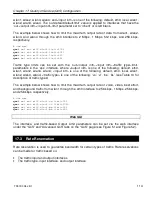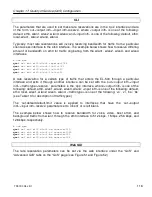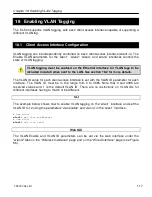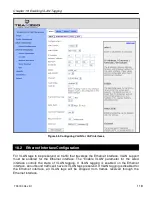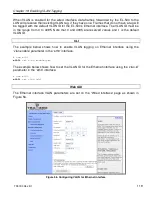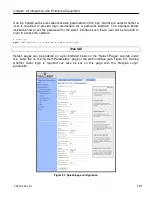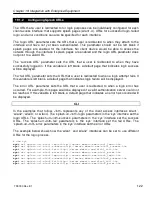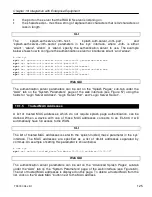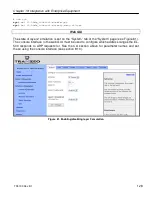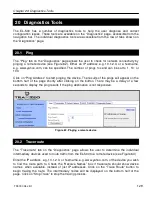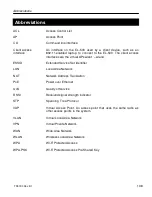
Chapter 19: Integration with Enterprise Equipment
TR0190 Rev. B1
127
Web GUI
The IP addresses of hosts that can be accessed without having to view a splash screen can be
set on the “Advanced Splash Pages” sub-tab under the “AAA” tab on the “System Parameters”
page of the web interface (see Figure 60). The list of IP addresses of bypassed hosts is
displayed on this page. To delete an IP address from the list, click on the “Delete Host” button
next to the IP address.
19.2 Layer 2 Emulation
Certain back-end systems (e.g. Internet gateways) use the MAC addresses of client devices
for authentication and accounting purposes. When the EL-500 is operating in routed mode
client device MAC addresses are typically not provided to the back-end servers. A layer 2
emulation mode can be enabled on the EL-500 to provide the client device MAC address
information to back-end systems.
When layer 2 emulation is enabled, the EL-500 will send Ethernet (layer 2) frames to the LAN
using the MAC address of the device the packet originated from as the source address. The
EL-500 will also act as a proxy and forward packets with MAC destination addresses of client
devices that are connected to it.
In layer 2 emulation mode, an EL-500 will respond to ARP requests if it has a route to the
target IP address contained in the ARP request. The list of subnets that the EL-500 has routes
to includes implicit/explicit network addresses. Thus care must be taken that these subnets are
not used elsewhere in the network.
Alternatively, to reduce the amount of address space consumed by the EL-500’s subnets, the
ARP responses can be limited to certain parts of the EL-500’s address space. The EL-500 can
be configured to disregard all ARP requests except for those with IP addresses within the
client address space that it has a host or network route for.
CLI
Layer 2 emulation is enabled with the ‘l2.client_mac_fwd’ parameter in the ‘sys’ interface. The
example below shows how to enable layer 2 emulation.
>
use sys
sys>
set l2.client_mac_fwd=yes
To limit the range of addresses for ARP requests that the EL-500 will respond to, set the
‘l2.hide_internal.enable’
parameter
in
the
‘sys’
interface
to
‘yes’.
Set
‘l2.hide_internal.gateway.deny.all’ in the ‘sys’ interface to ‘yes’ to disregard all ARP requests
except for those with addresses within the client address subnet. The example shows how to
disregard all ARP requests except for those for addresses within the client address space.
Summary of Contents for EL-500
Page 20: ...Chapter 3 Using the Web Interface TR0190 Rev B1 20 Figure 8 Rebooting the EL 500...
Page 68: ...Chapter 11 Ethernet Interface Configuration TR0190 Rev B1 68 Figure 38 Wired DHCP settings...
Page 108: ...Chapter 16 Controlling Access to the ER 1000 TR0190 Rev B1 108 Figure 50 VAP ACL configuration...


